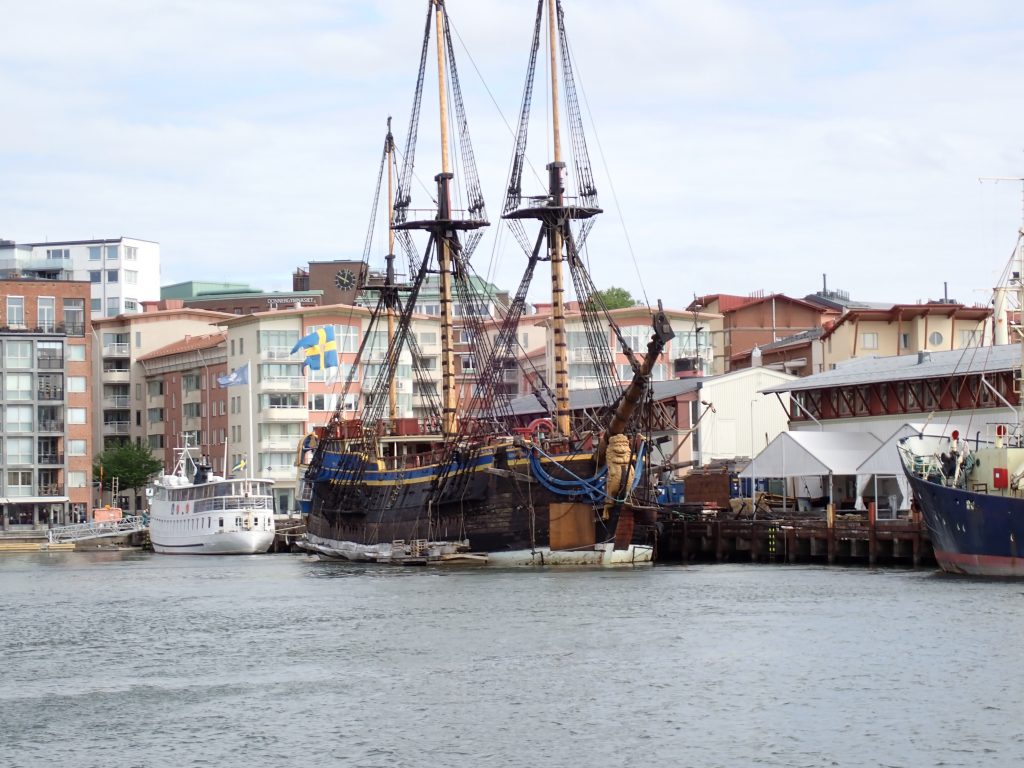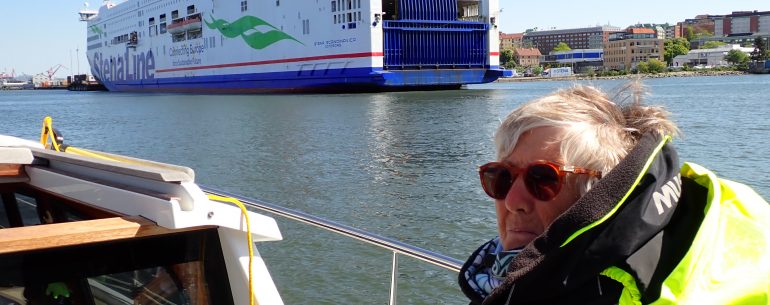The observant among you will have noted that I often use alliteration in the titles of the blog entries here, so before you feel smug and think that I have lost the meaning of alliteration, I need to go through how the Swedish pronounce Gothenburg. For a start, they spell it the Swedish way (seems fair) – Göteborg. The initial ‘G’ then becomes effectively a ‘Y’ and it is therefore pronounced jœtɛˈbɔrj (as per the International Phonetic Alphabet). In more Essex terms this pronunciation might be more like ‘yertabory‘. So, we have stuck with alliteration of the blog post title, but at the same time mashed up completely the English and Swedish languages!
Anyway, today we headed off to Gothenburg. We left Källö Knippla moderately early and, given a fairly chunky breeze (a technical yachting term!) we rolled out just the staysail and had a lovely sail right down to near the Älvsborgsbron bridge. This is the first bridge over the Göta älv river. From there we had to motor as sailing to the east of the bridge is not allowed, so we rolled the staysail in and motored past the two Stena Line terminals and then, as a total contrast past a replica of an 18th century Swedish East India Company trading ship called, appropriately, the Götheborg.
The Swedish East India Company was formed in 1731 to mix it with all the other East India Companies being formed around this time (the British and Dutch being the pre-eminent ones). They were initially given a 15-year monopoly on far eastern trade, carrying Swedish timber, tar, iron and copper, trading it for tea, porcelain and silk. The company existed for 82 years and their vessels made 131 voyages using 37 different ships. The Götheborg was built for this trade in 1738 and didn’t contribute much to this total number of trips. Her somewhat illustrious history meant that she only managed three trips to China and while just 900m from finishing the third trip ran onto the Knipla Börö, a well known rock. As you can imagine there has been significant speculation about this over time, but the cause is still uncertain. They had a very experienced pilot on board – Caspar Matthisson from Brännö (a local island). He had been a pilot for seven and a half years at the time of the accident, but probably didn’t work much afterwards! The rosk is apparently now often known as the Ostindiebådarna (“the East India shallow”) – possibly not the historic legacy the East India Company were looking for.

Anyway, once past the Götheborg we carried on down the river until just before the new Hisingbron bridge and turned into the Lilla Bommen marina in the centre. We had pre-booked a space through Dockspot (as you have to now) but ended up in a slightly different one as I tried to do a crash turn round the end of a ‘houseboat’ in the opposite berth – something of a tight turn. I tried to make it look deliberate, but the sight of us pulling the boat across manually one berth was perhaps rather obvious!
To celebrate our arrival we had a meal out at the restaurant next to the marina – a nice end to the day.
